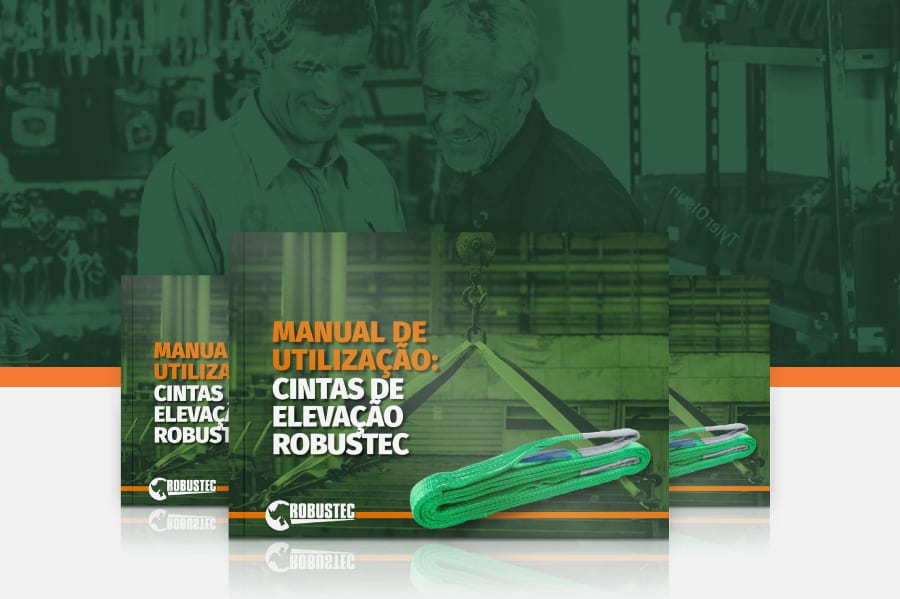No products in the cart.
Cargo mooring, Loads
Robustec lifting slings: know how to use them
Robustec lifting slings are the most efficient and versatile means of connecting loads to a lifting equipment.
With this equipment, combined with some accessories such as hooks and shackles, operators can lift the vast majority of loads types available on the market.
In order to ensure that the slings have the maximum service life and do not offer accidents risk, it is essential to follow some parameters in their use.
Next, understand how to plan the Robustec lifting slings use and what are the main precautions in their handling!
How to plan the Robustec lifting slings use?
To ensure that Robustec lifting slings offer the best possible quality and safety standards, their use must be properly planned.
This requires attention at different stages, including the loading process, the route to be taken, as well as its destination and the unloading. See what should be observed in each of these stages:
Load
The first step to guarantee agility and safety when lifting loads is to know all the dimensional and geometric details about them.
This includes information such as weight, center of gravity, sharp corners, and anchor points.
These data can be obtained in the project specifications, in the material documentation or in the load indications itself.
The crane hook must be positioned above the object’s gravity center. For asymmetric loads, the center must be determined based on the individual strengths and length extensions. The objects corners should be observed to check for the existence of sharp points capable of damaging the sling. If so, you would need gloves and special protections to protect it.
Route
Determining the route your cargo will travel is critical to ensuring that it does not face any obstacles. The handling must have plenty space available for the material passage and must be done smoothly, avoiding sudden movements.
It is important to check that the right foot has a compatible height and that there are no workers on the way, evacuating the area and signaling it at the handling time.
If the load gets stuck during progress, it should be lowered immediately.
Destination and unload
Finally, it is also necessary to abide by the load destination, making sure that it is properly prepared to receive it with pallets, seats or other similar resources so that it can be lowered safely.
Be careful never to lower material onto the lifting components, such as hooks and straps, as this can cause them to snag and unbalance the load, damaging the lifting accessories.
Now that you know what to take into account when planning your Robustec lifting slings use, next, check out the most important precautions for handling it!
What are the main precautions in handling it?
During the lifting process, there are several risk factors, so some precautions must be taken to ensure greater safety during the handling. Among the main ones, we highlight:
- Slings should never be twisted or knotted, as this can reduce their load capacity by 25% to 75%;
- No person should stand under or over suspended loads;
- Slings cannot be attached directly to other slings. Connectors or shackles use is necessary;
- When fasten the slings on the hook it must be made in such a way that the sling is supported in its center, and never by the end, as this can cause stress in inappropriate places and the possible load detachment;
- Slings must be positioned so that the load is evenly distributed;
- Never attach a large ring to a smaller hook. Materials must have appropriate openings;
- The load must be lifted a few centimeters from the floor, to check that the lashing is secure and that the angles and tensions in the slings are correct before starting the handling;
- The act of lowering the load must be done smoothly, to avoid collisions.
These were some of the most important precautions regarding the use of the Robustec lifting slings, but there are still many other points that deserve attention among users. Do you want to know them all? Then access our exclusive e-book on the subject!


